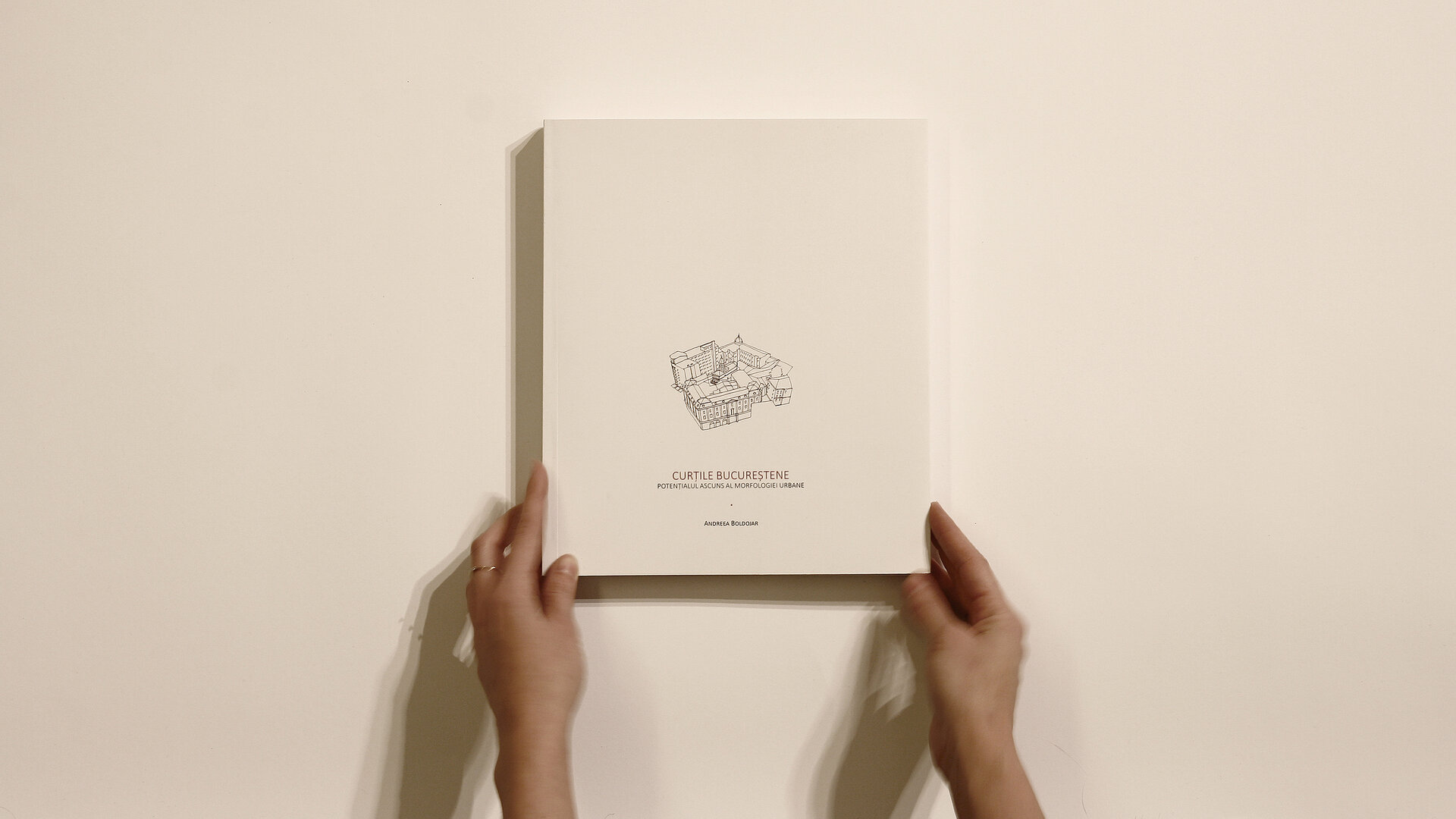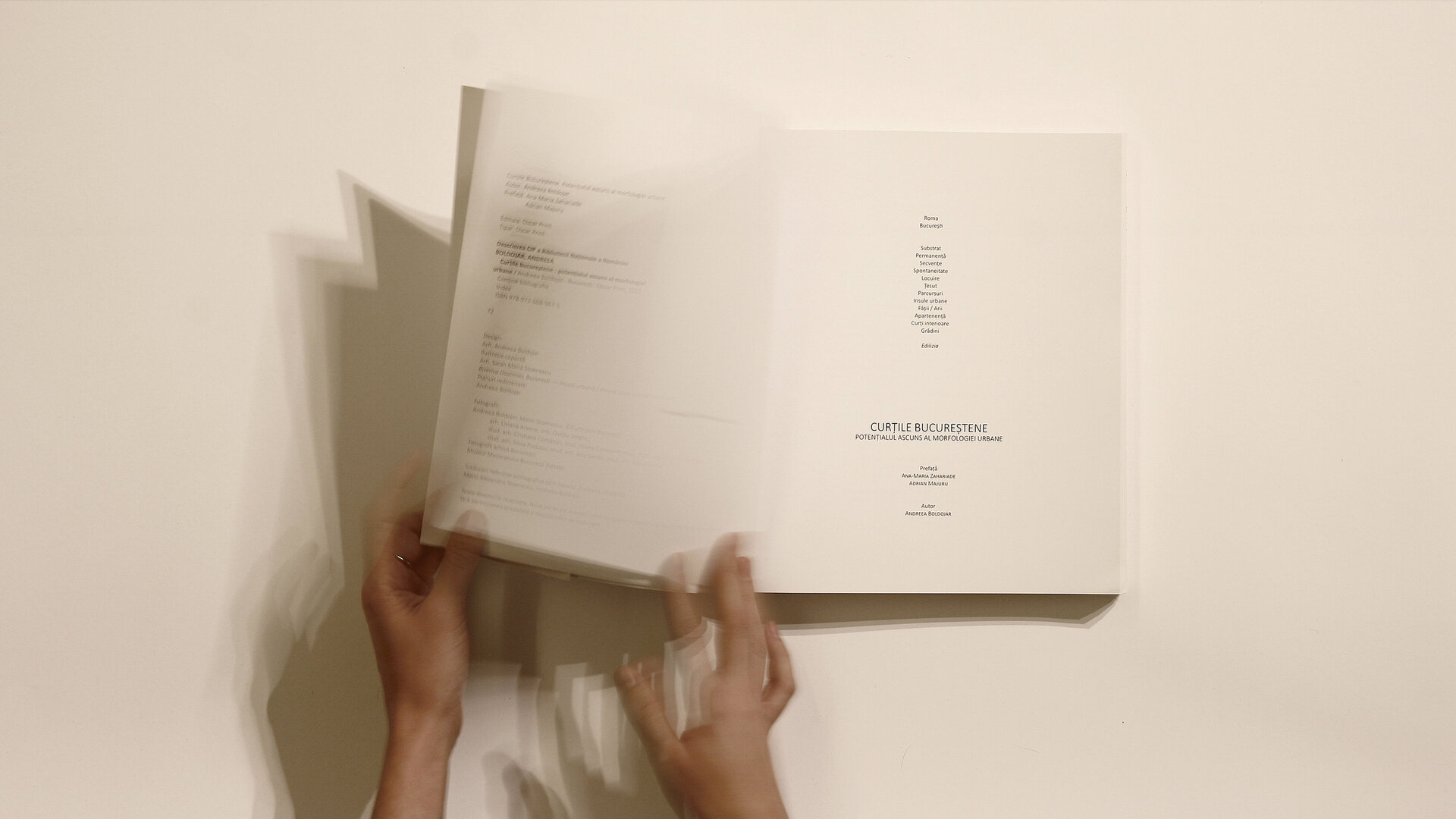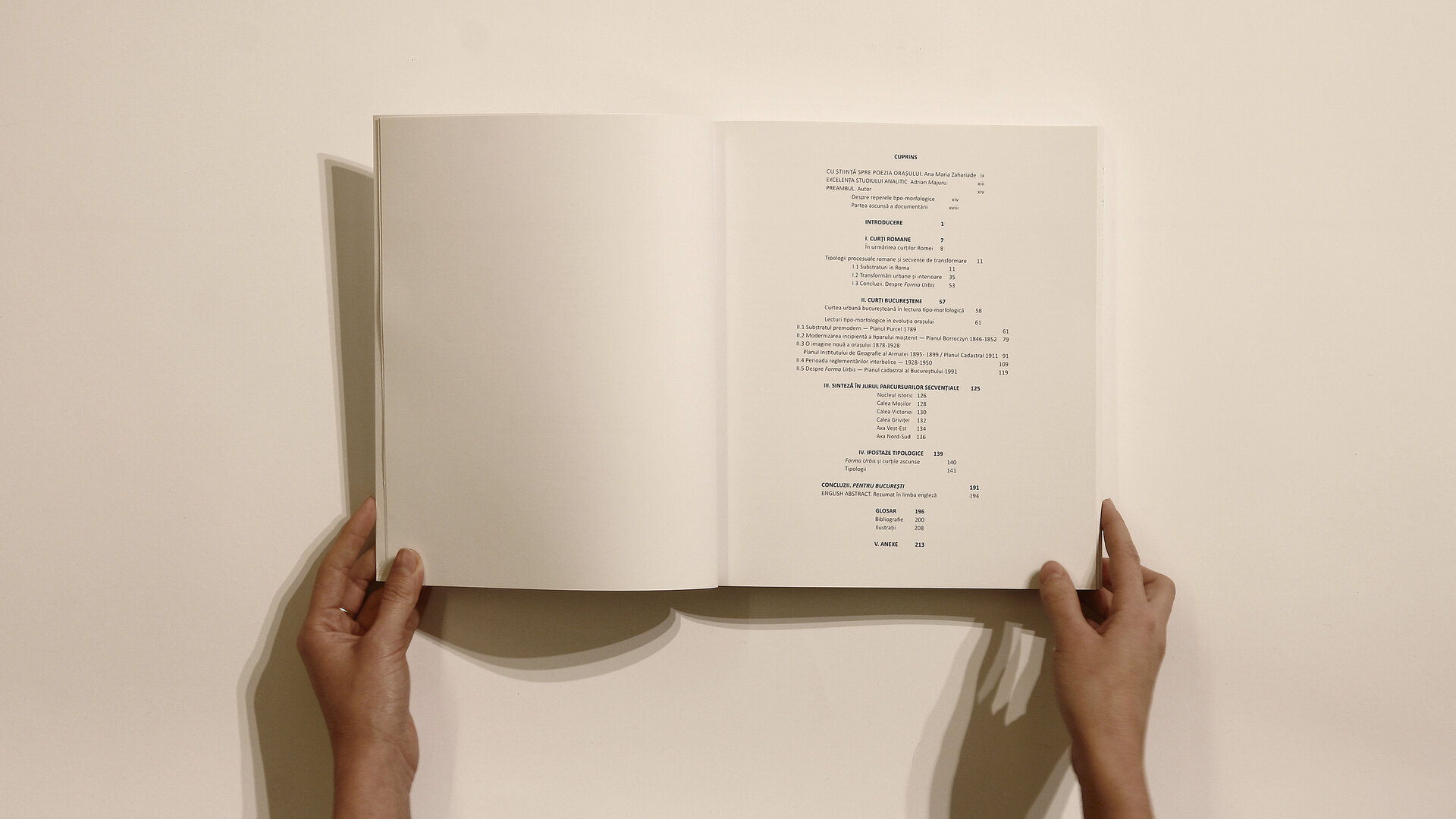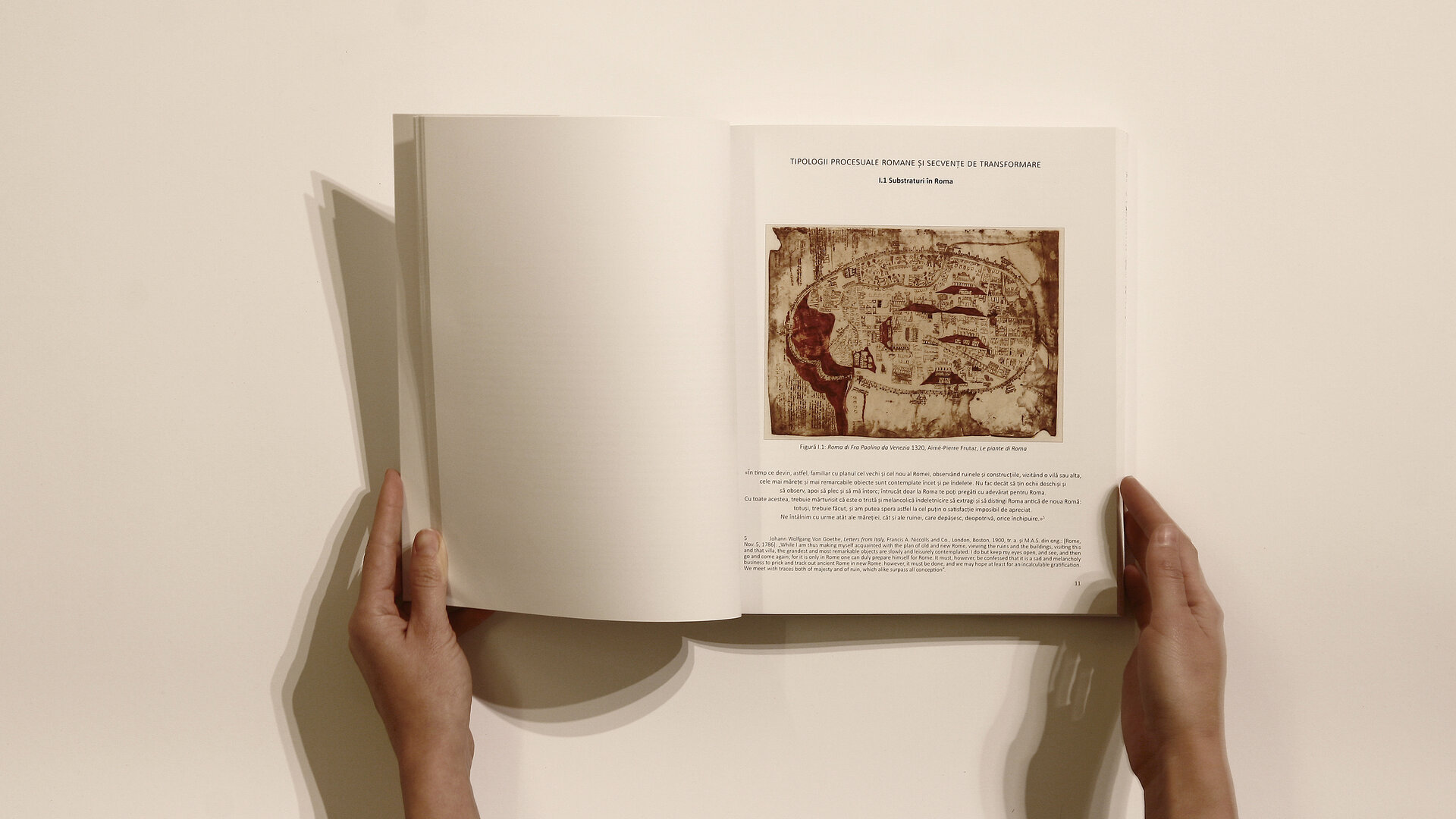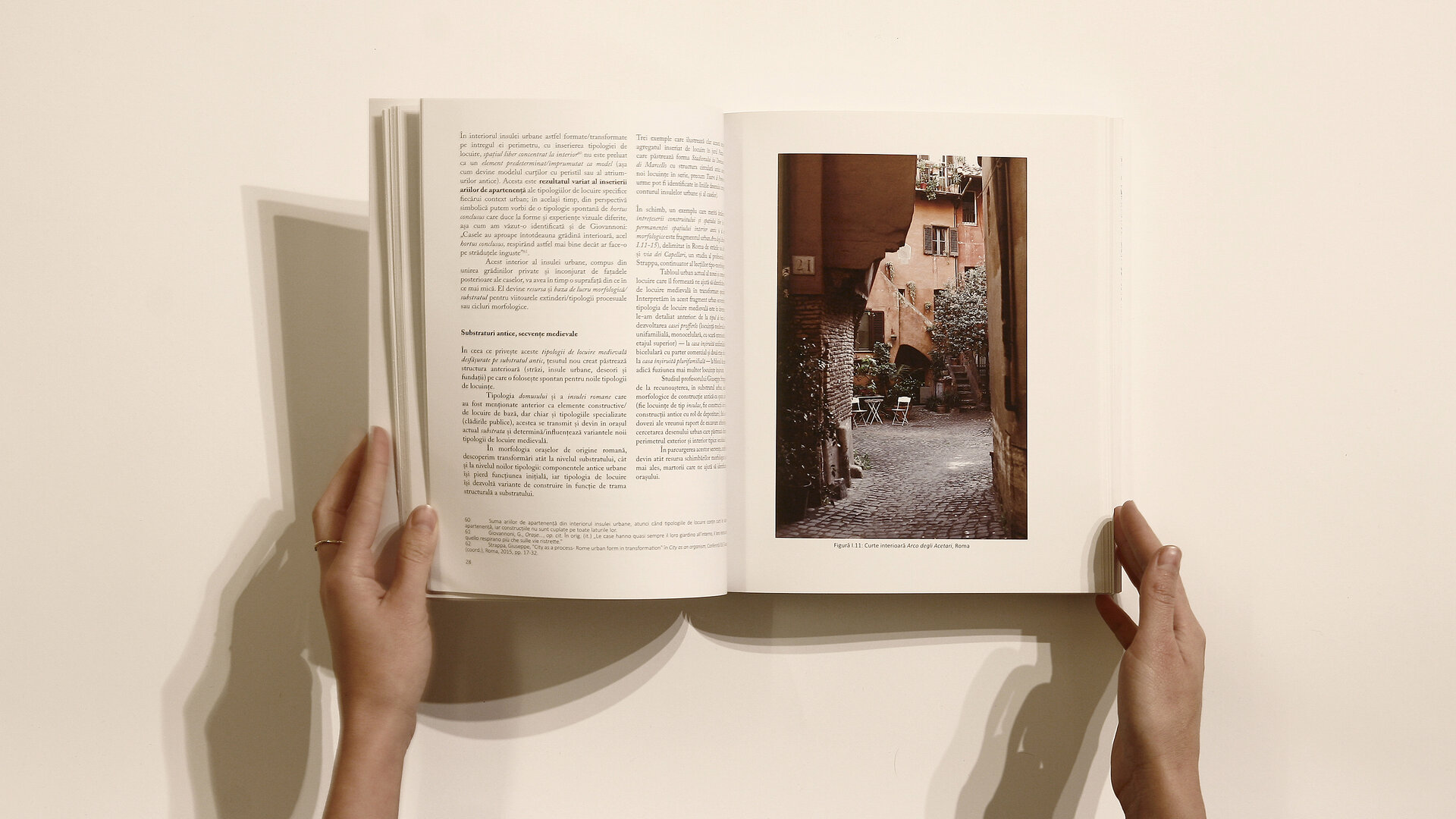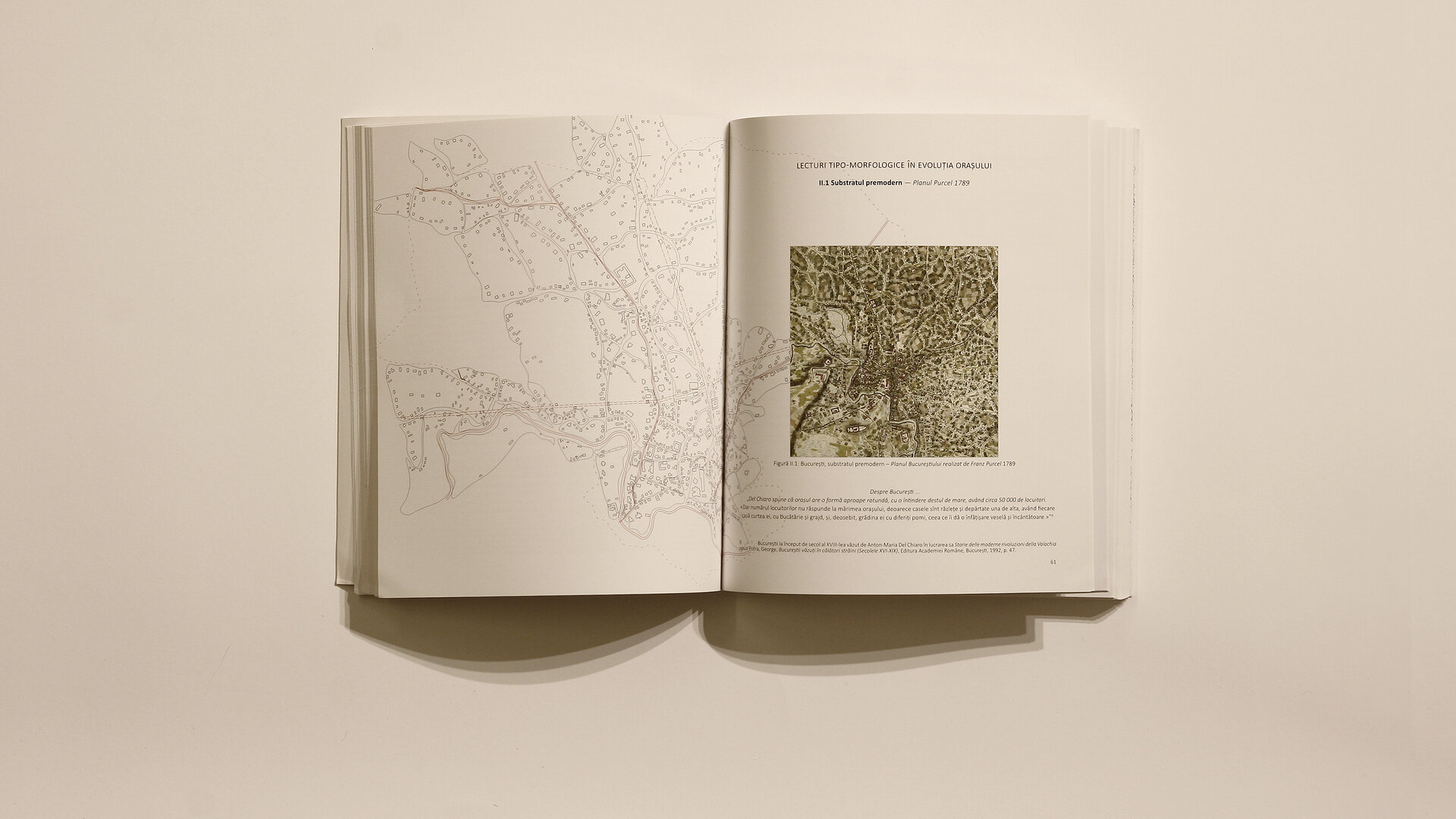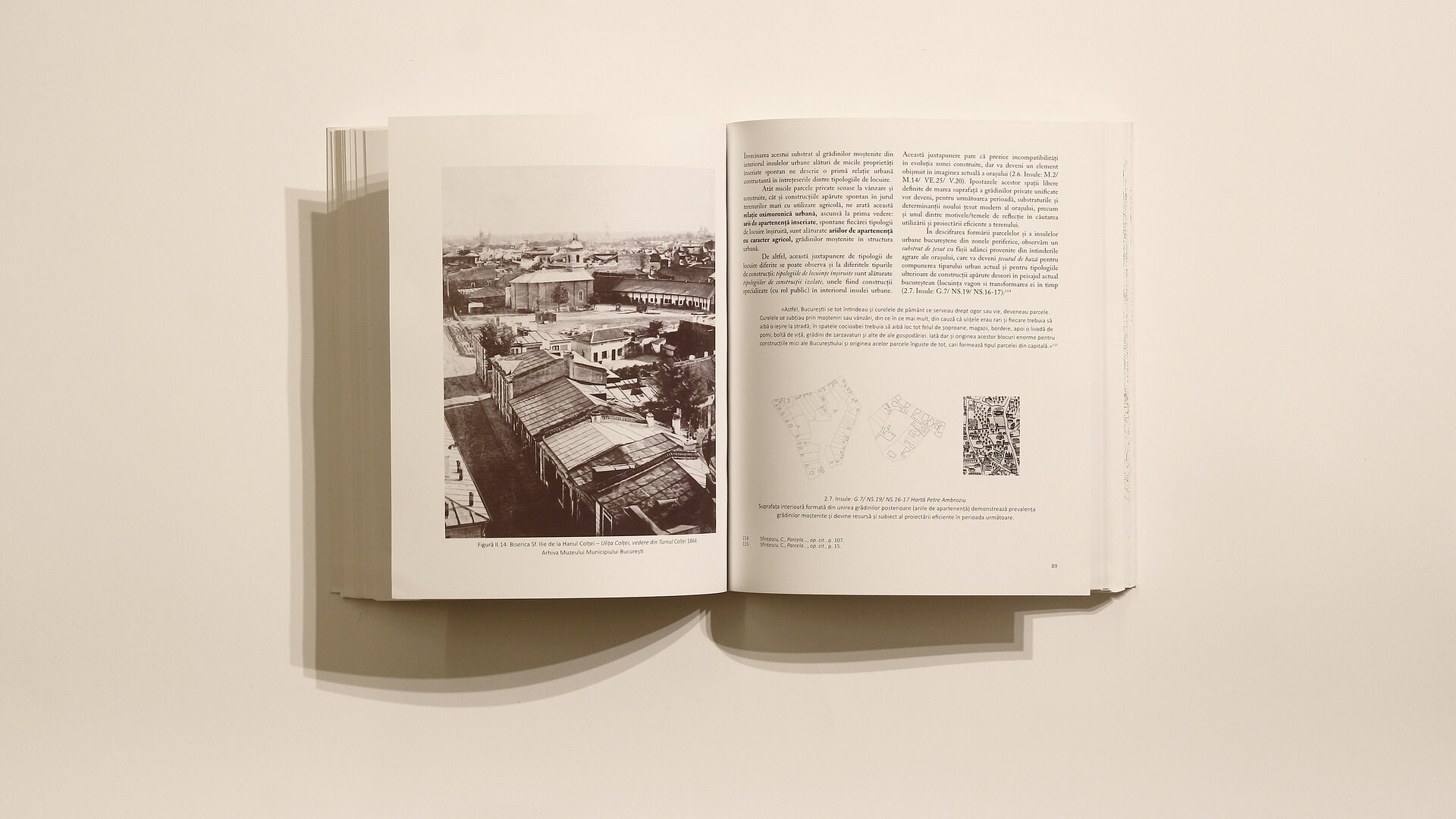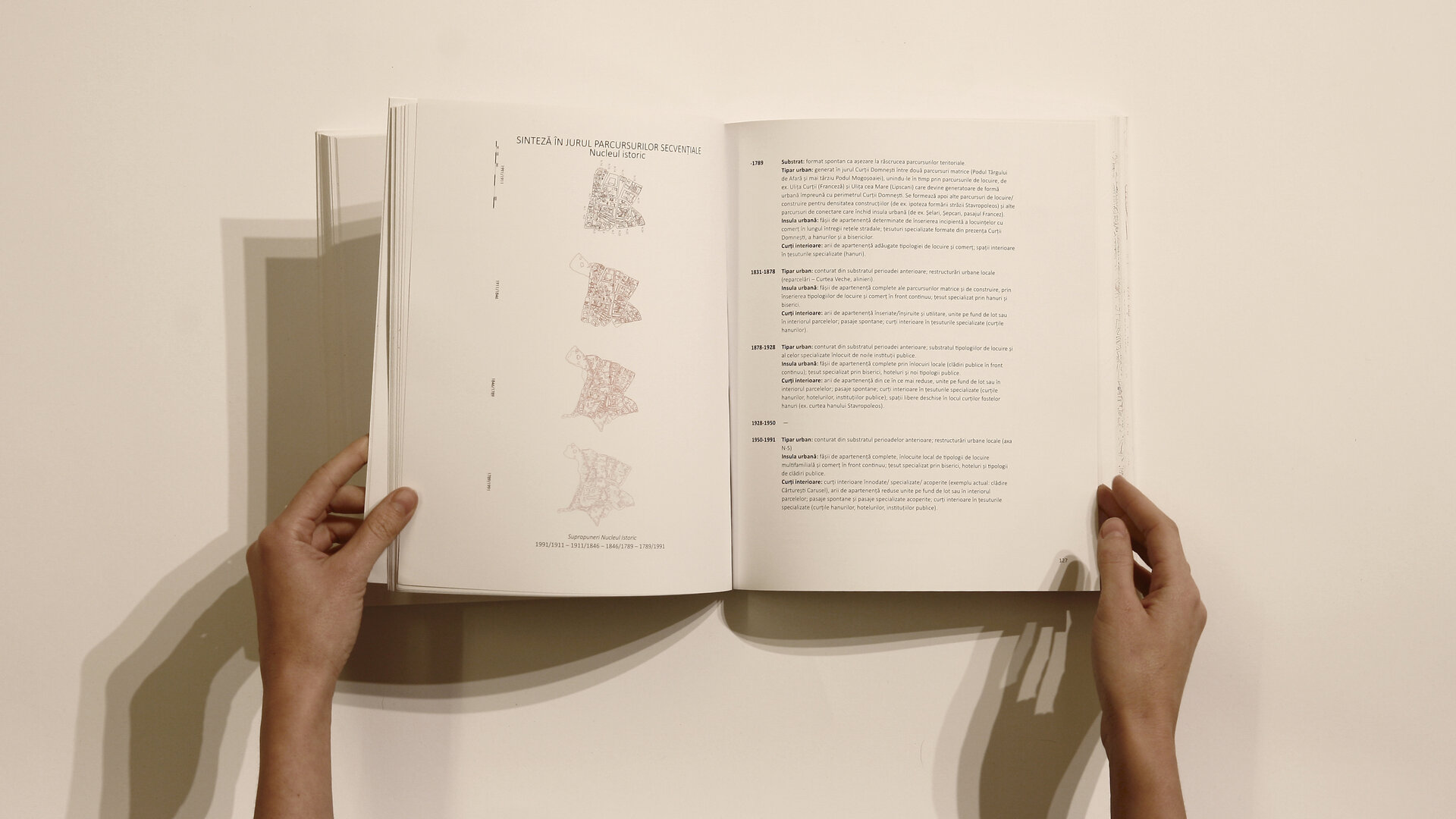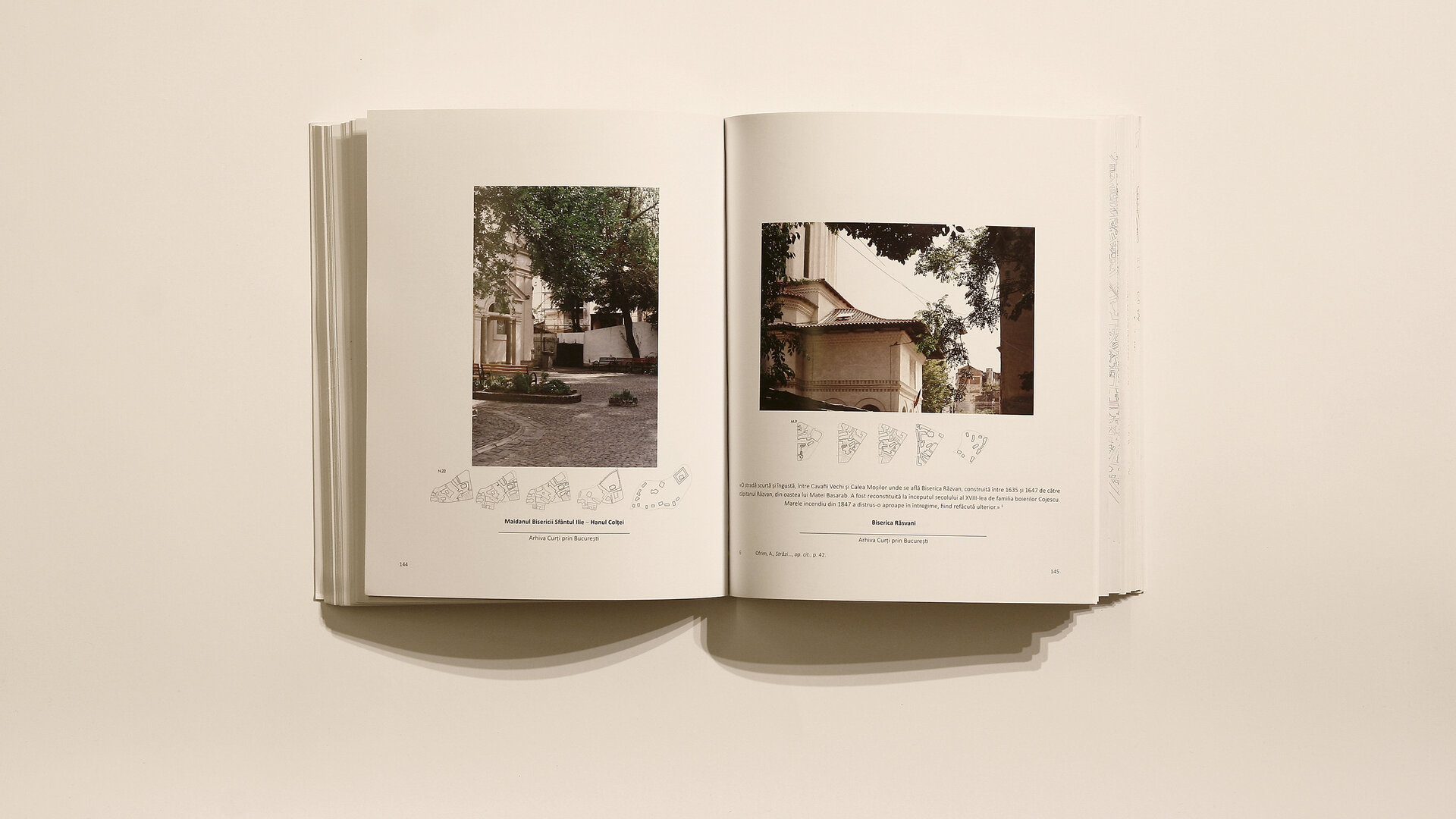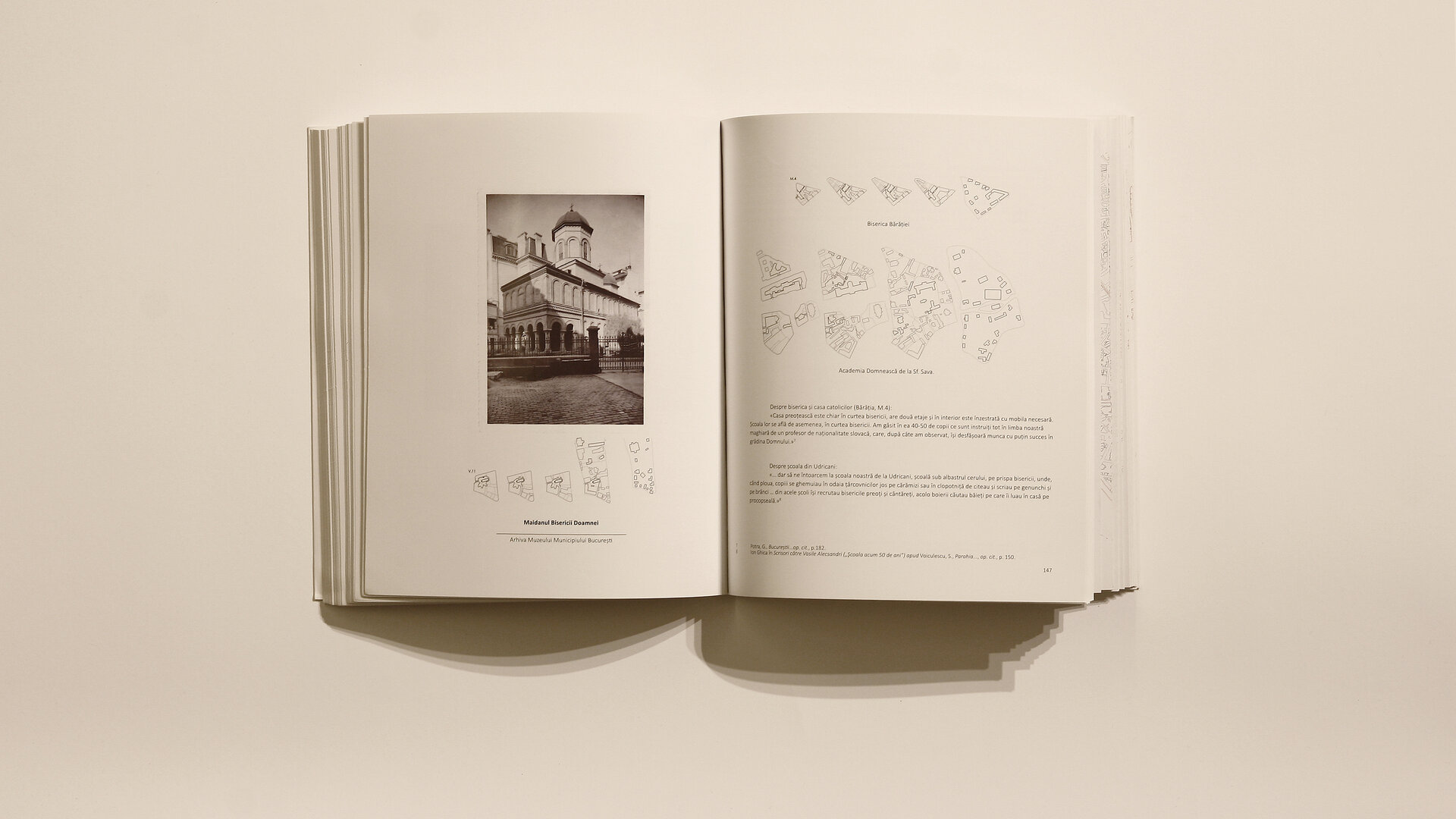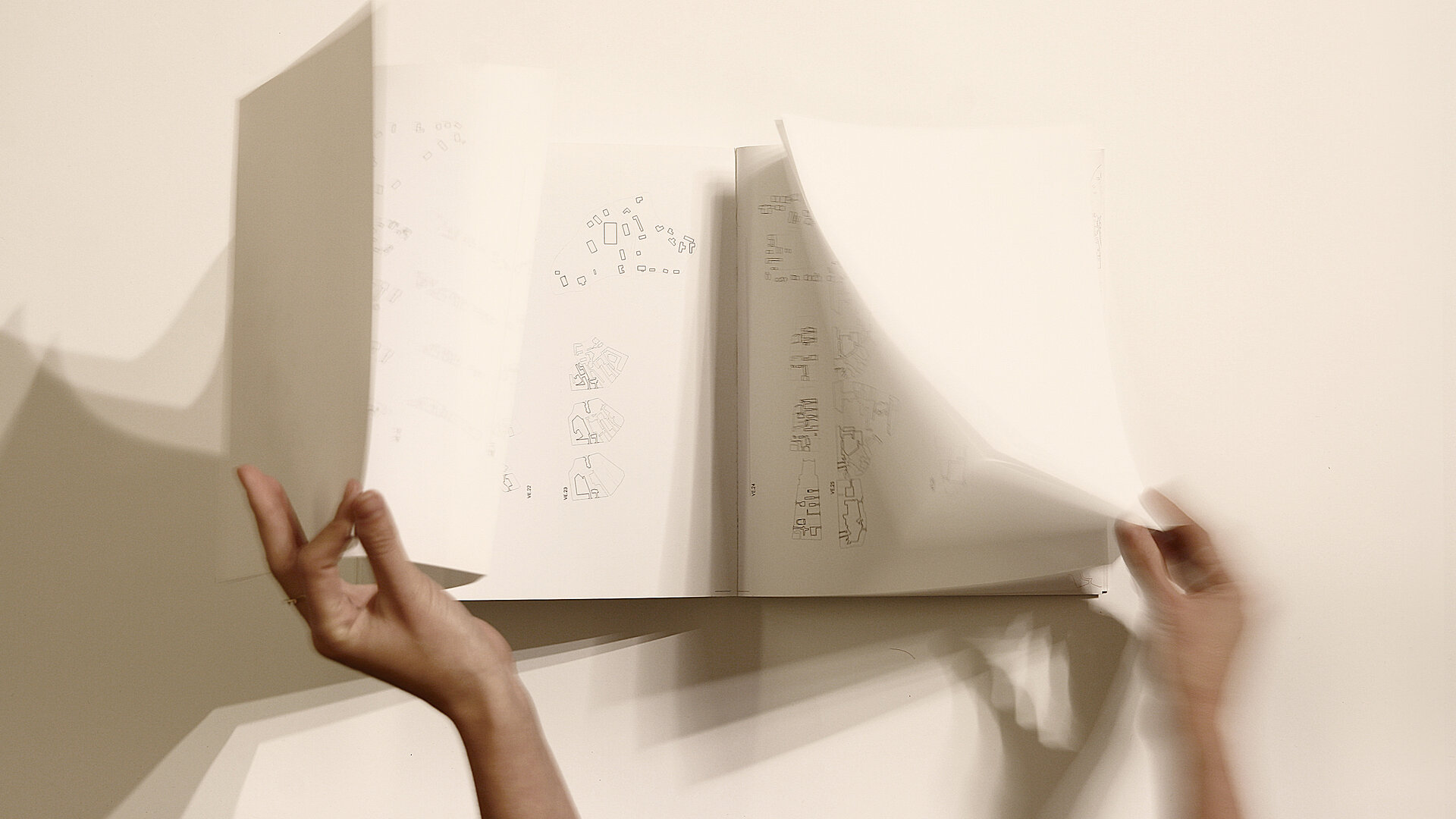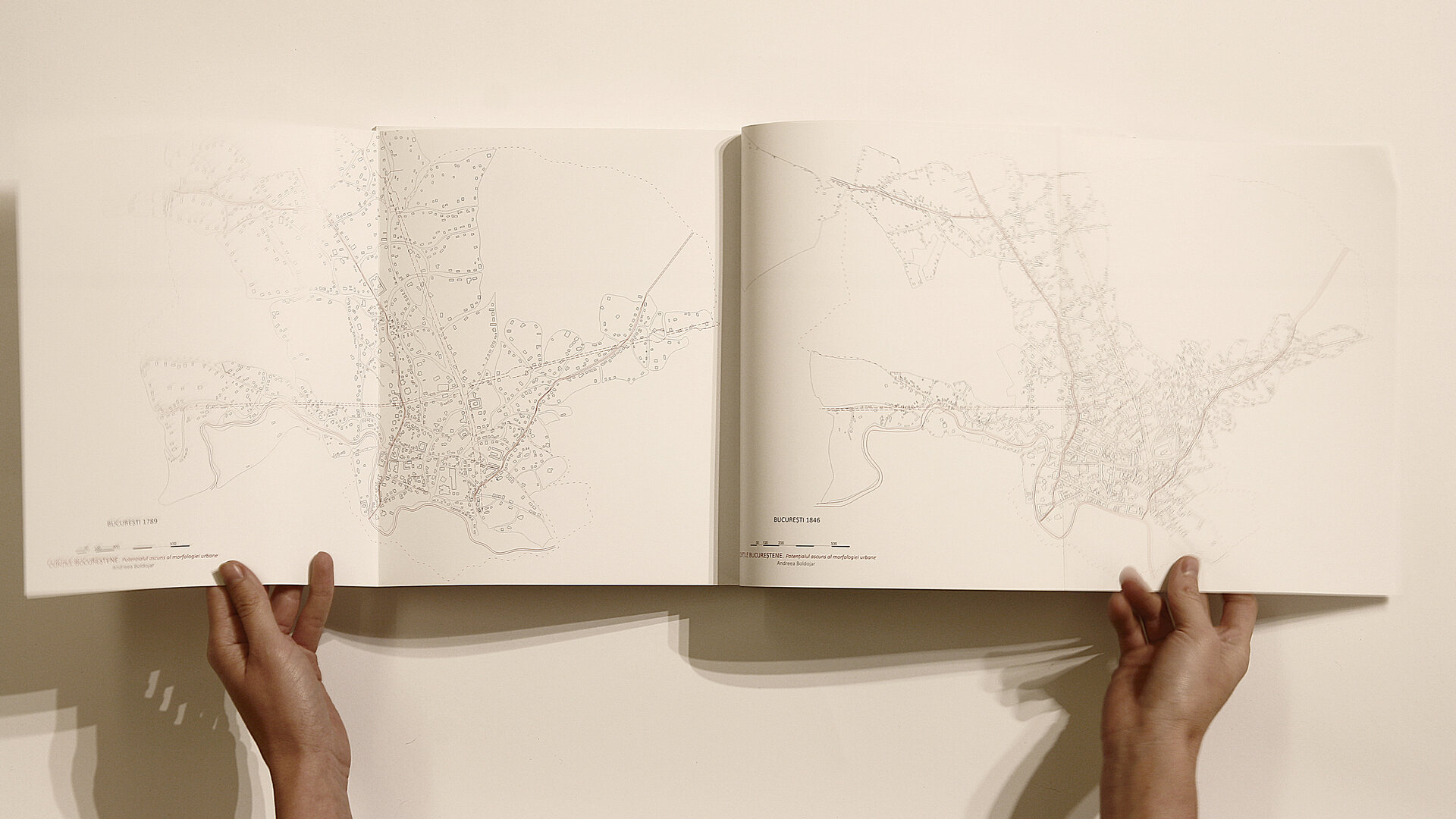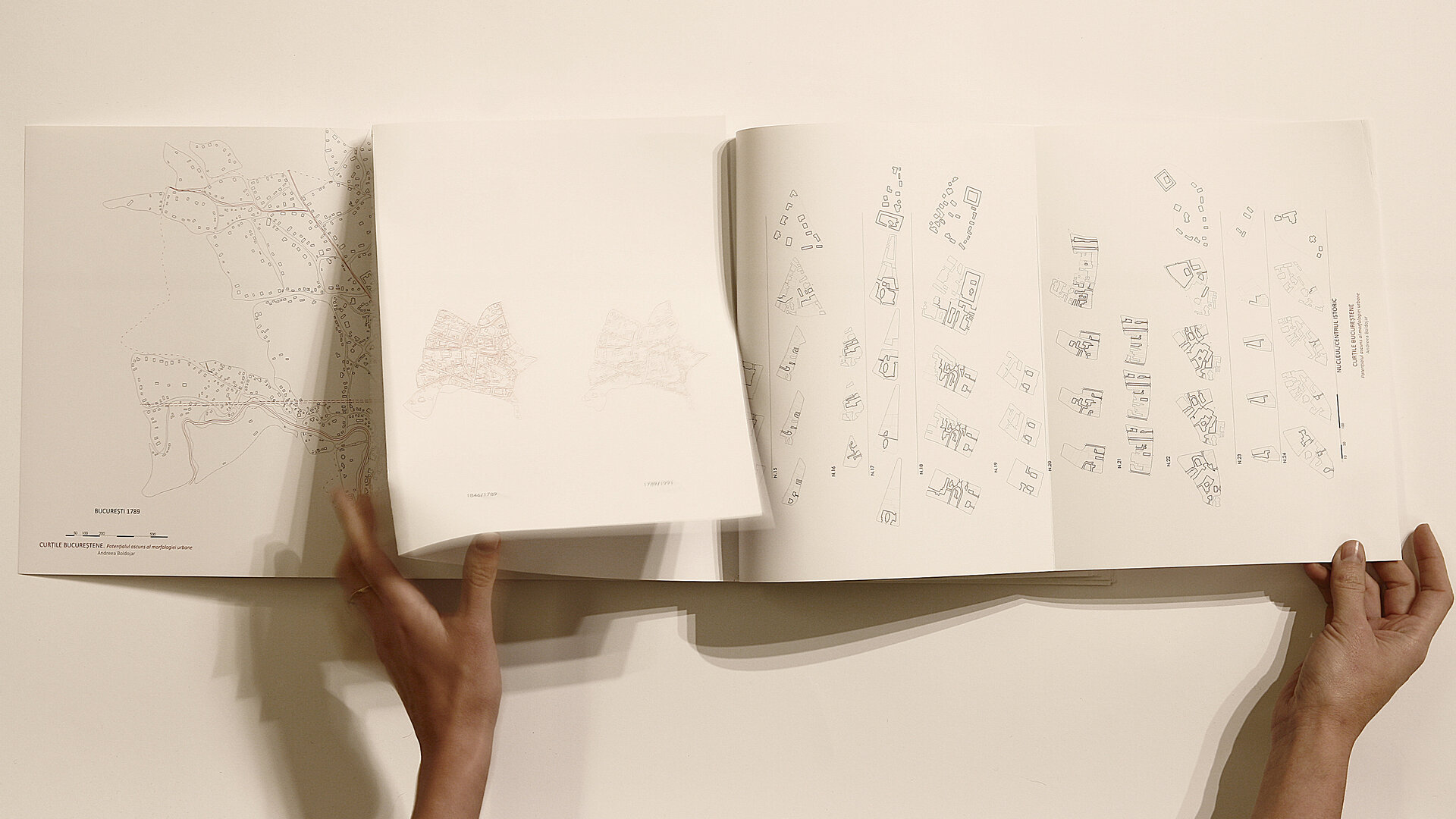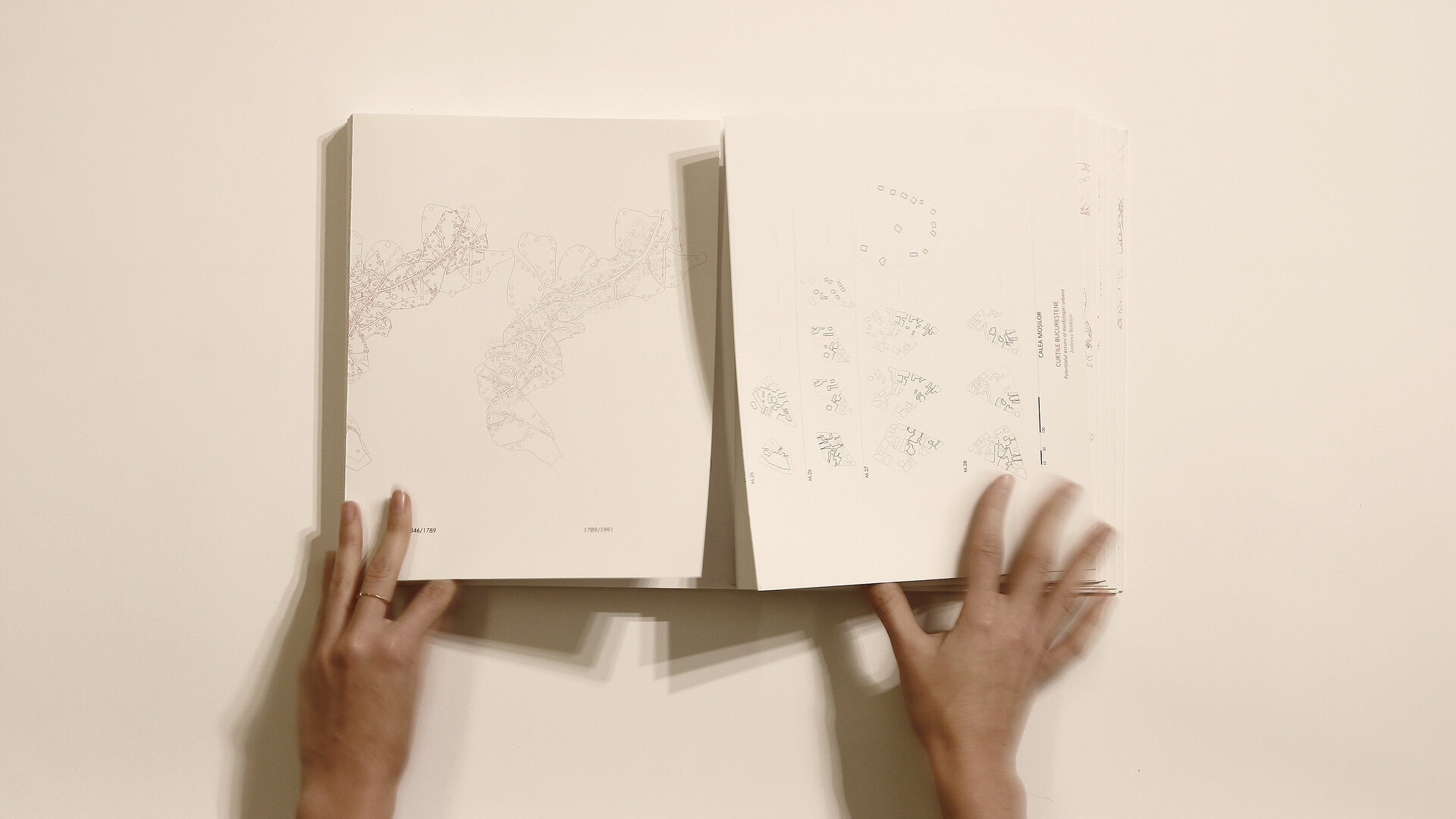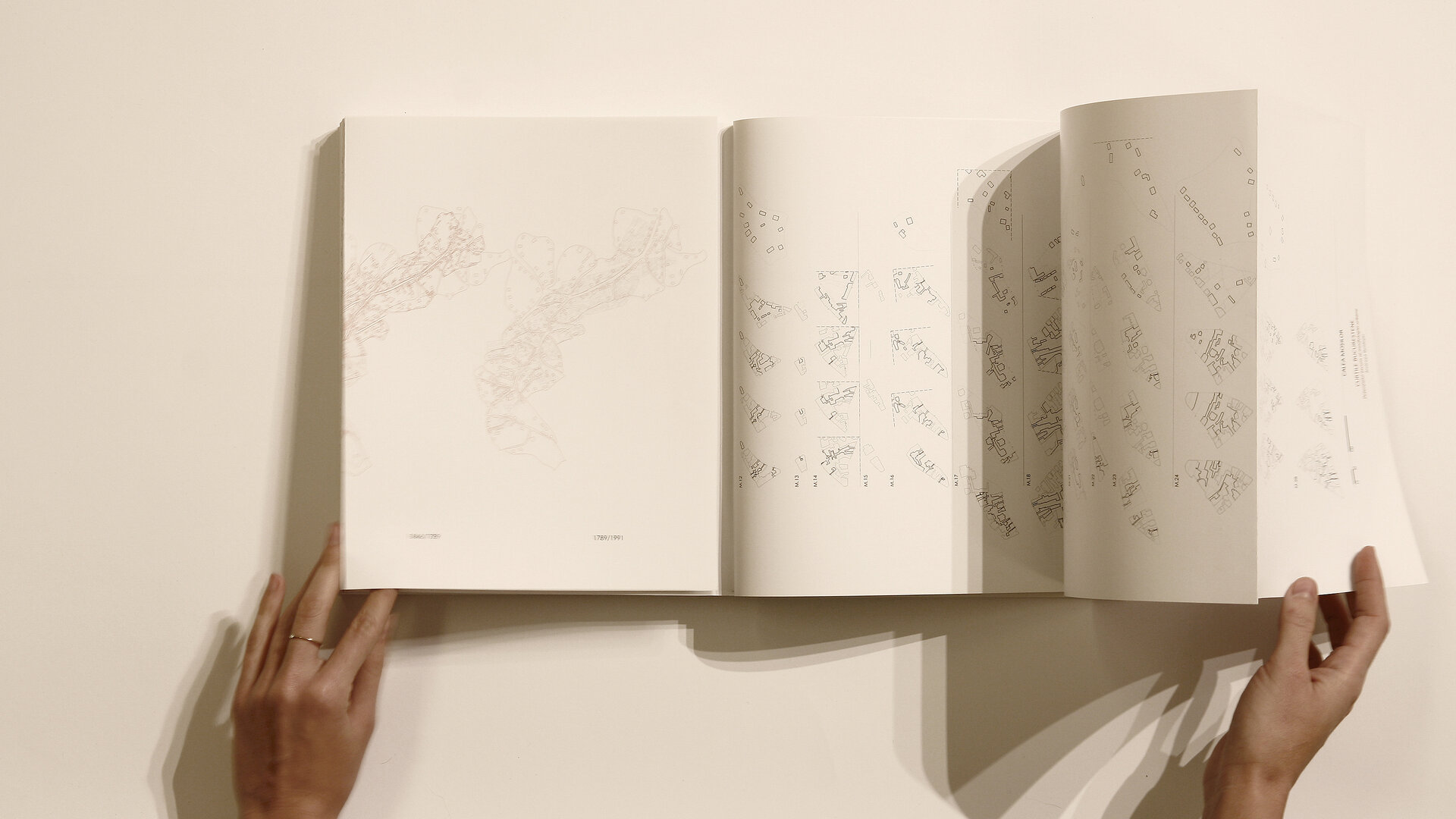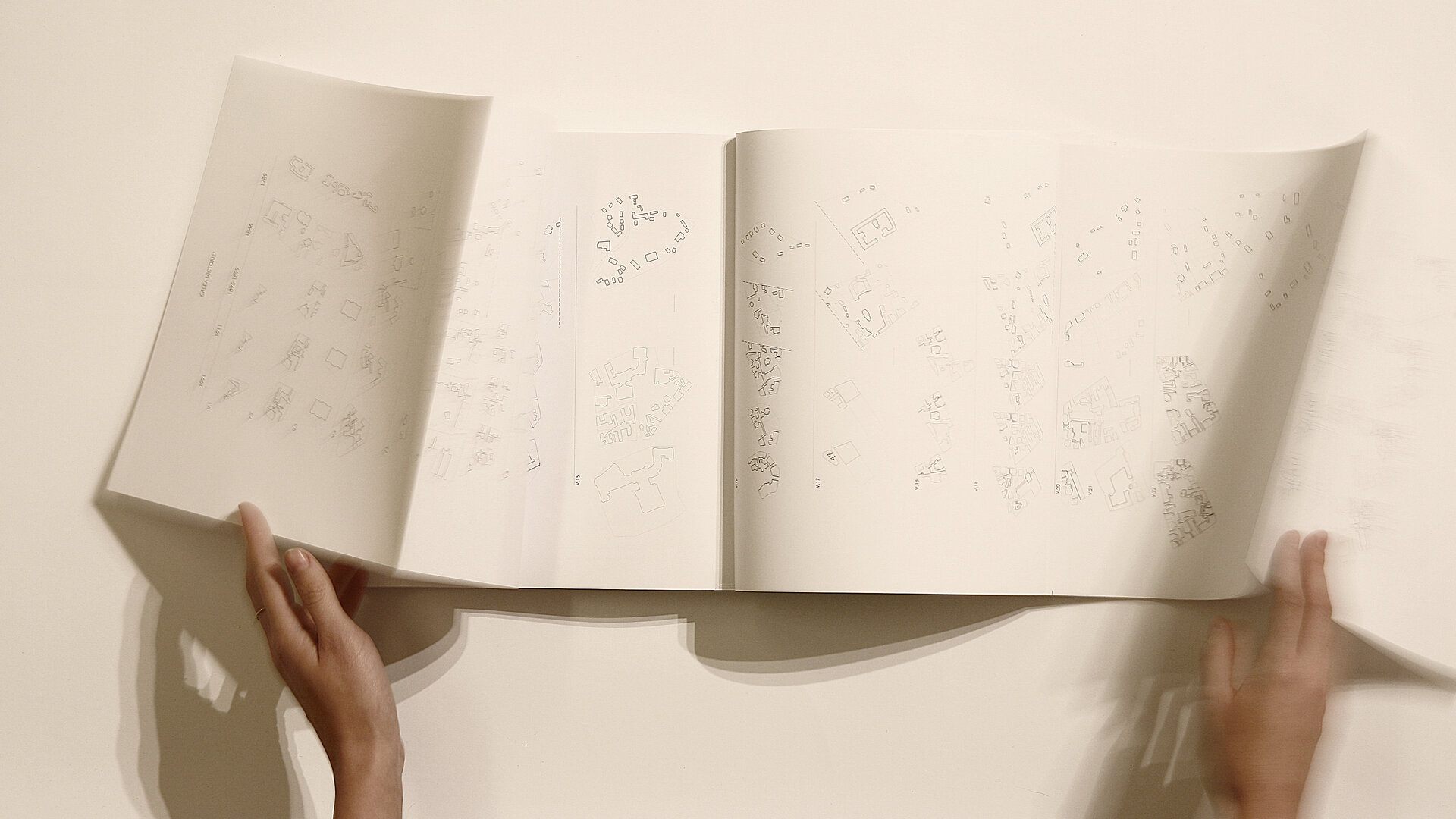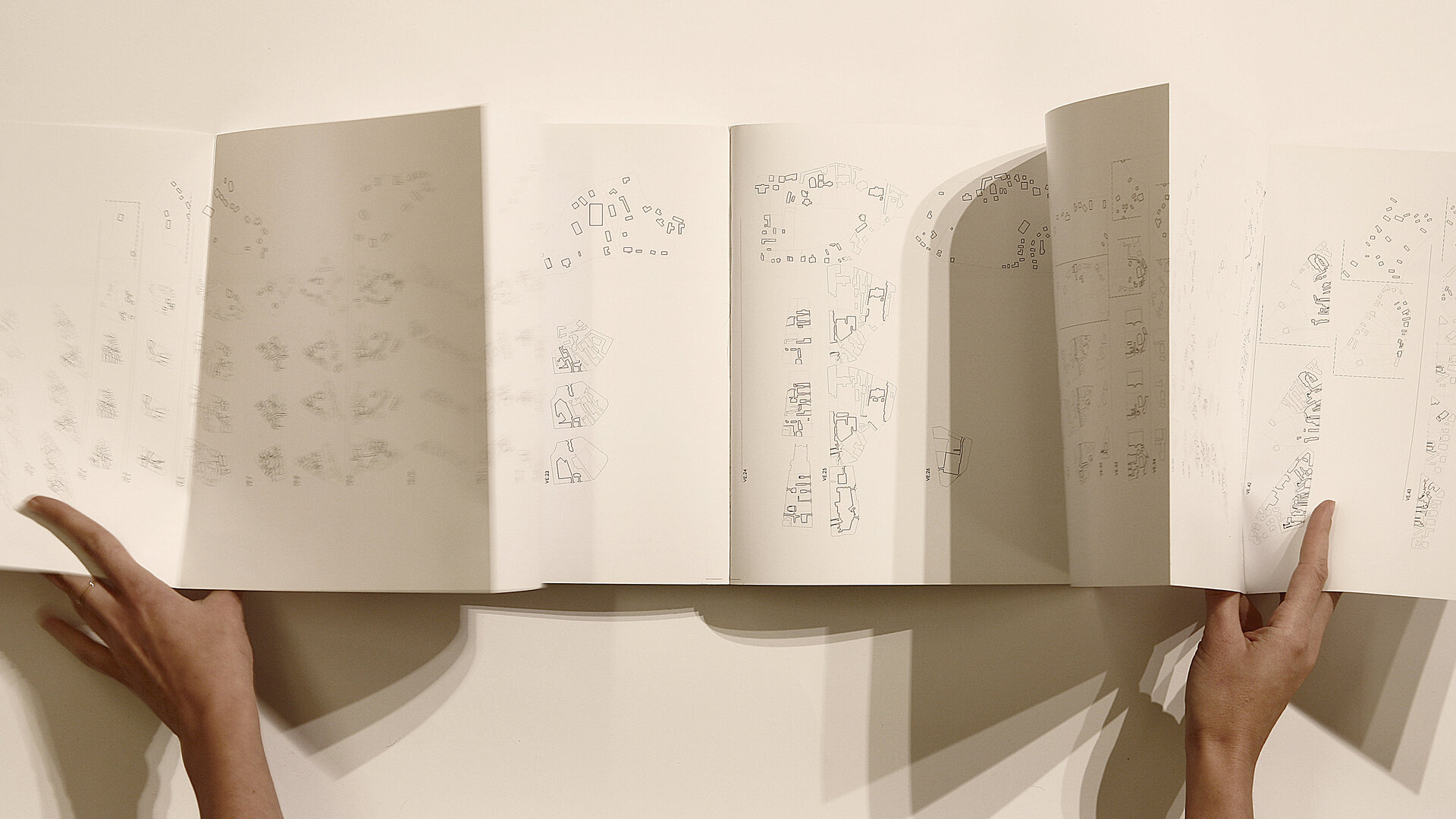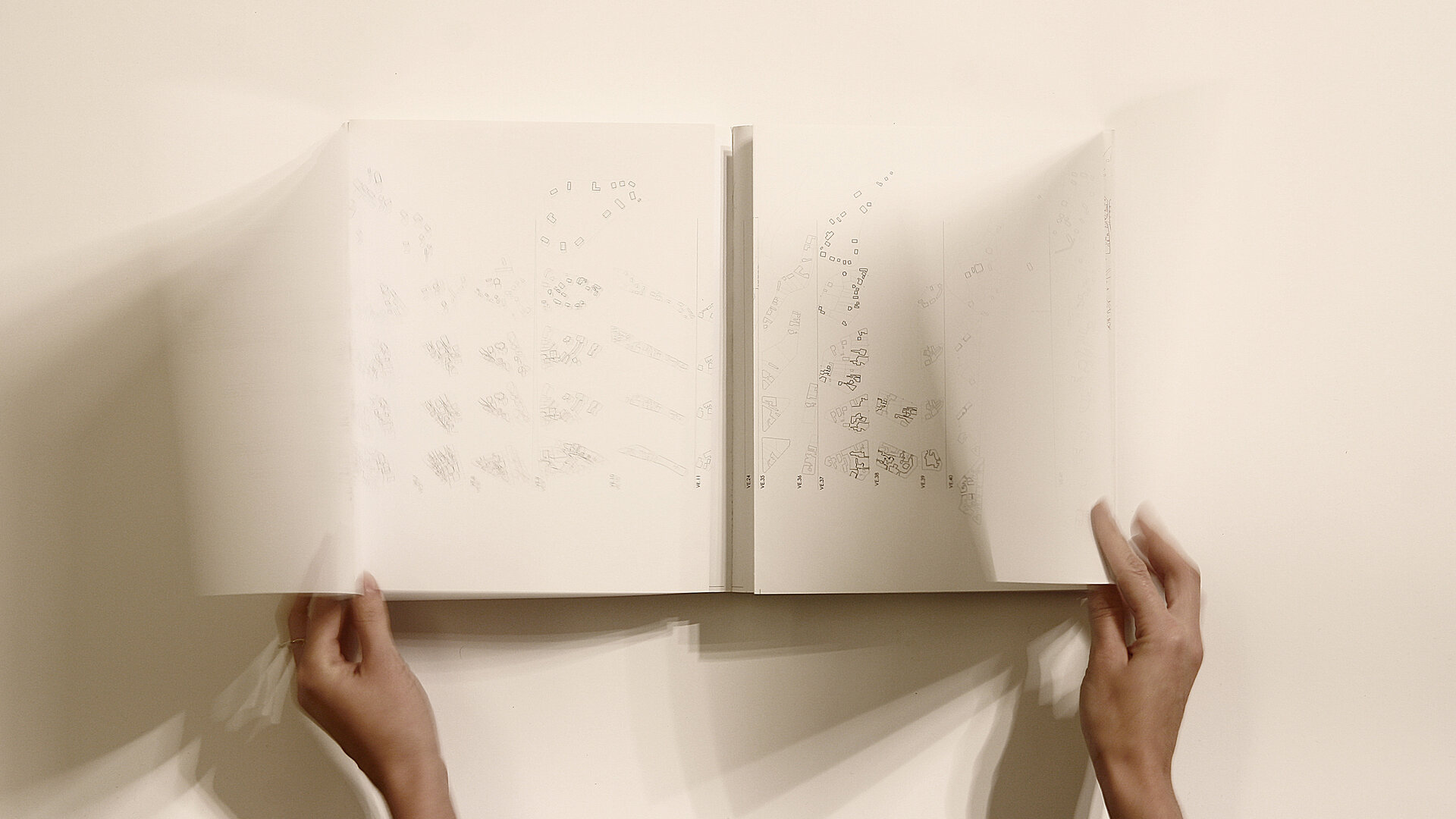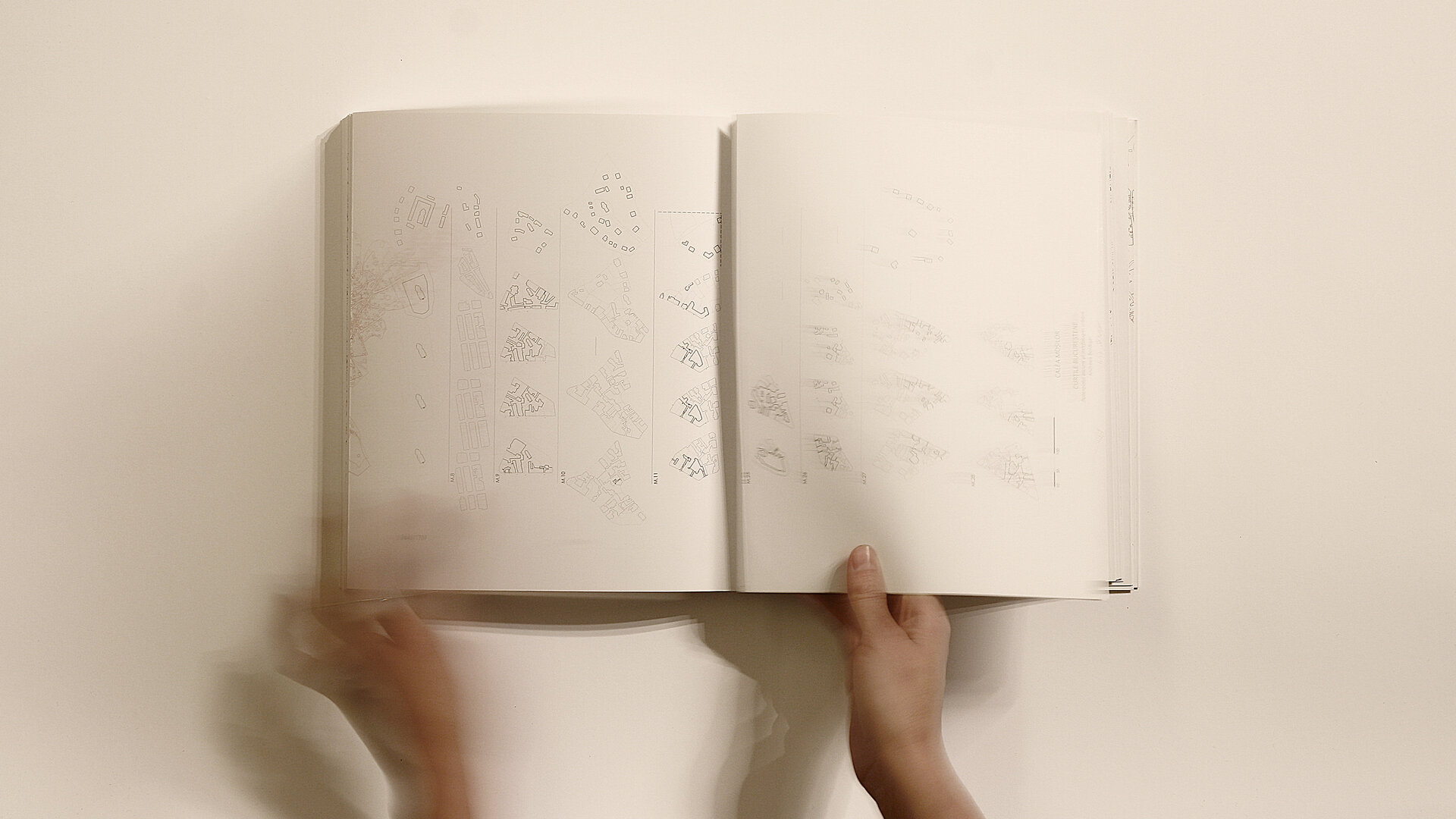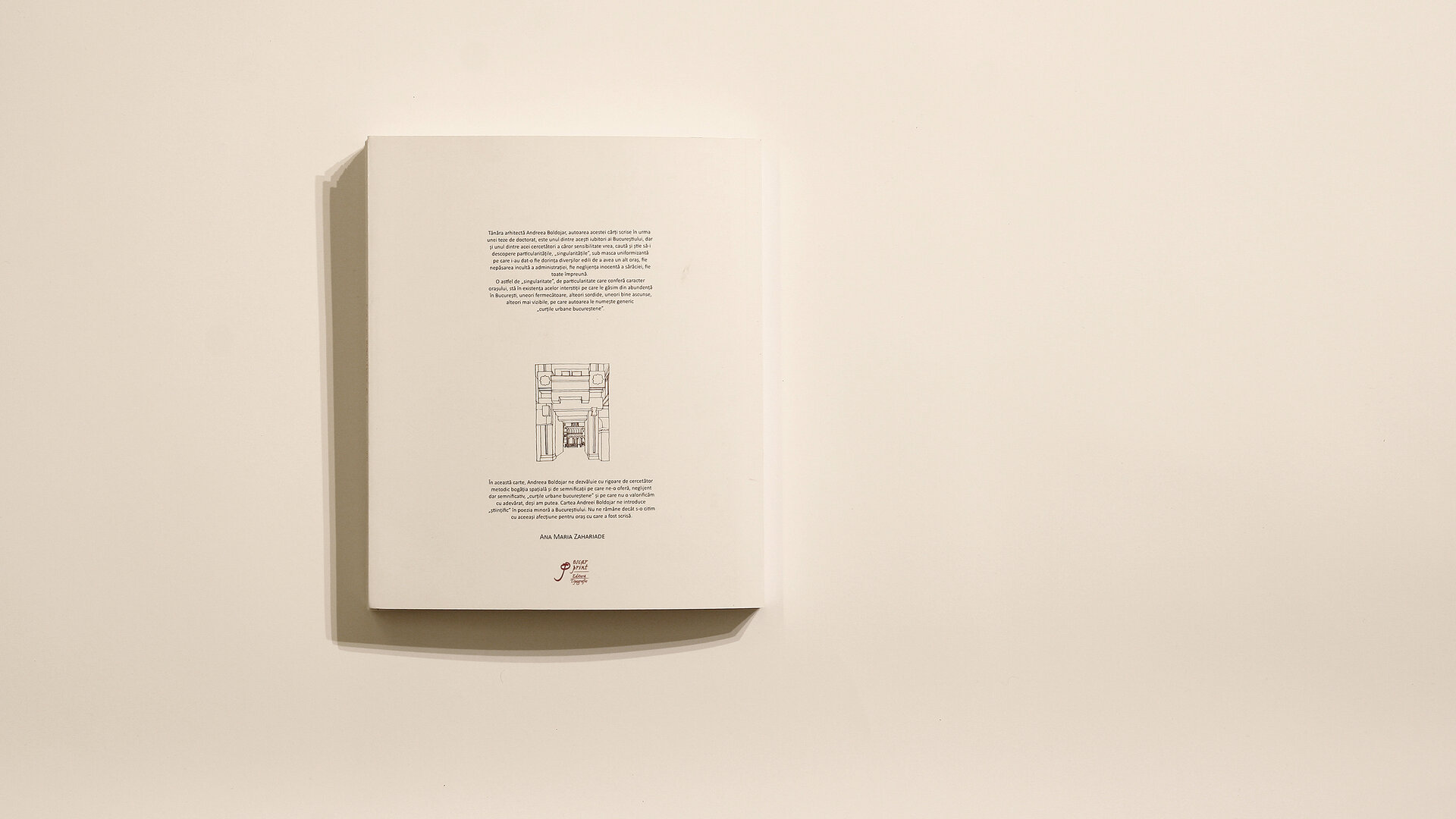
- Nomination for the “Research through Architecture / Architecture Books” section
Courtyards of Bucharest. The hidden potential of urban morphology
Authors’ Comment
The hidden places of everyday Bucharest are the curious places that are becoming less and less outlined in contemporary Bucharest. Here, the blurry boundary between public and private spaces brings transparency to the layers formed over time, at times visible between places emerging from a dense historical urban coherence, such as buildings and passages. These surprising interstitial spaces are the interior courtyards of Bucharest.
We propose this book as a repertoire of interior courtyards studied with a methodology borrowed from the Italian school of architecture. This research documents the intentions or spontaneities in composing and transforming the urban patterns. We aim to discover the courtyards of Bucharest, classify them typologically and processually, and interpret a historical reading of the city, which we consider a first step in building the contemporary design instances that reflect the formal and spatial reasons and patterns of the city’s old structure.
The typo-morphological Italian school laid out the foundation for the urban reading according to its constituent urban morphologies and their typological building process, thus unifying the two disciplines: architecture and urbanism. Insufficiently studied and applied in the Romanian specialized culture, the Italian method is the scientific model pursued in this thesis. To that end, the book has this important methodological dimension. The introduction includes the study of the typo-morphological Italian School following the method of interpreting the urban process, based on Saverio Muratori’s works (Studi per un'operante storia urbana di Roma/Venezia) and his continuators’ Gianfranco Caniggia and Gian Luigi Maffei, who developed the methodology and proposed specific instruments and terminology (e.g.: Lettura dell'edilizia di base).
The purpose of this research is not only to theoretically deepen a method of urban study but, mainly, to develop its application. This inevitably refers to the Italian context. The collected data allow us comparative conclusions to identify the most suitable working tools for Bucharest’s urban framework. Consequently, to identify the process of interior spaces, we interpret the transformation of the basic building types (and courtyards) from the basic Roman tissue, starting with the substratum tissue, following the morphological sequences/phases of aggregations and urban transformation.
In the end, we test the applicability of the Italian typological-morphological school method for Bucharest’s tissue. We investigate and overlap the cartographic documents (by redrawing the plans from the pre-modern period to the current cadastral plan). We read the urban form by searching for the sequences of urban aggregation and transformation of its spontaneous urban pattern proposed by the Italian school. We verify as well the specialized studies on the historical fabric of the city and the urban regulations. In the end, we identify the typological process of Bucharest’s courtyards in different hidden instances and interpretive scales.
This method substantiates theoretical urban stitches by identifying and naming the specific hidden typo-morphological elements of Bucharest.
Identifying the urban fabric process through the Italian School’s method and tools represents theoretical/methodological lessons based on which we can design an alternative model of intervention with historical and morphological coherence.
- People at work in their homes
- Diploma Box
- Courtyards of Bucharest. The hidden potential of urban morphology
- Alfred Popper, 1874-1946: the (re)discovery of an architect
- Eternal Architecture in Romania. Cemeteries, mausolea, funerary buildings in extra-Carpathian territory (1830-1939)
- Heritage, Landscape and Restoration of Historical Gardens
- Architect Ion Căpșuneanu. Achievements and sufferings
- Toma Stelian House: a historical perspective
- Isolation in a series of liminal states
- Best practice guide: Băile Govora case
